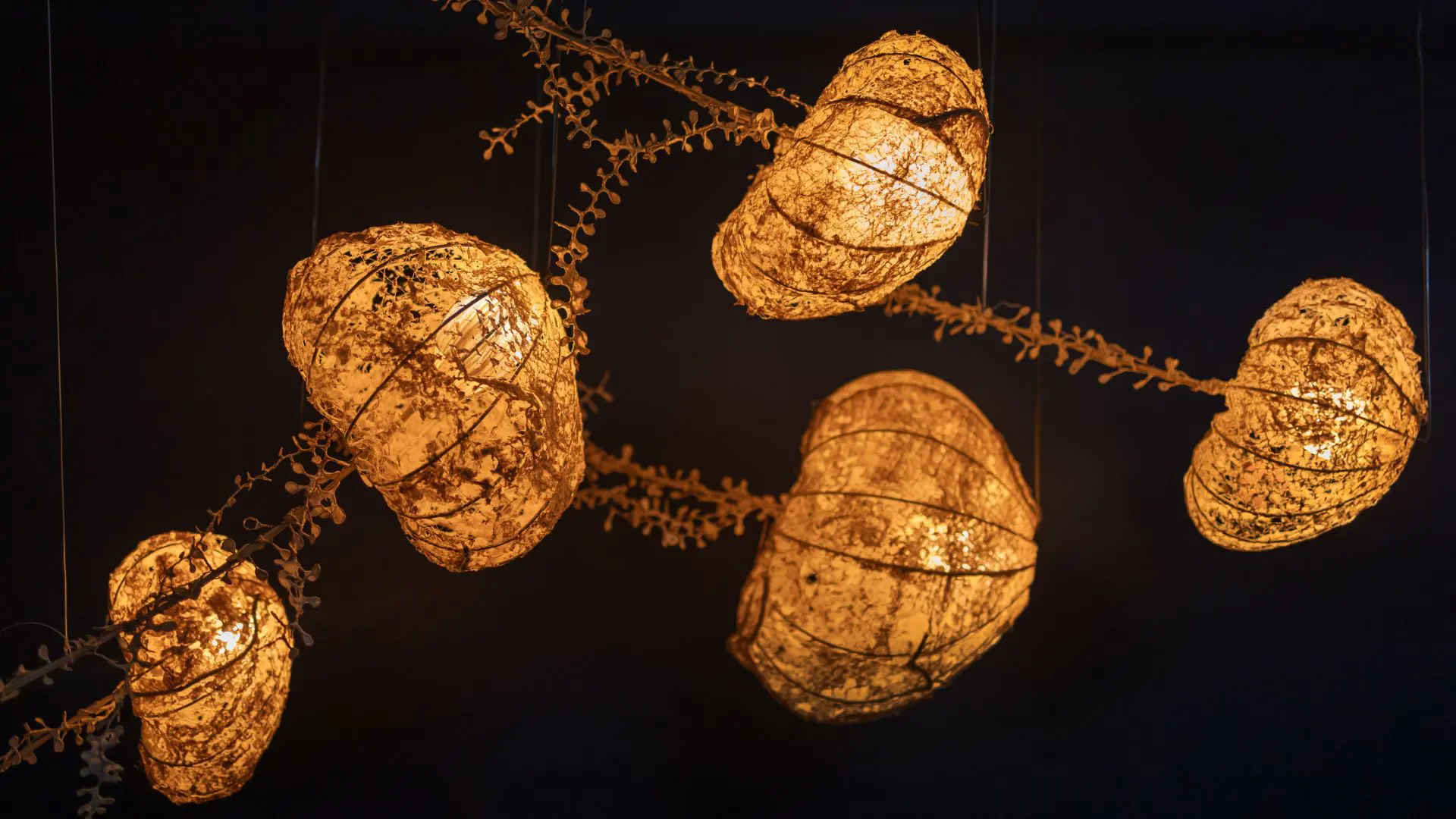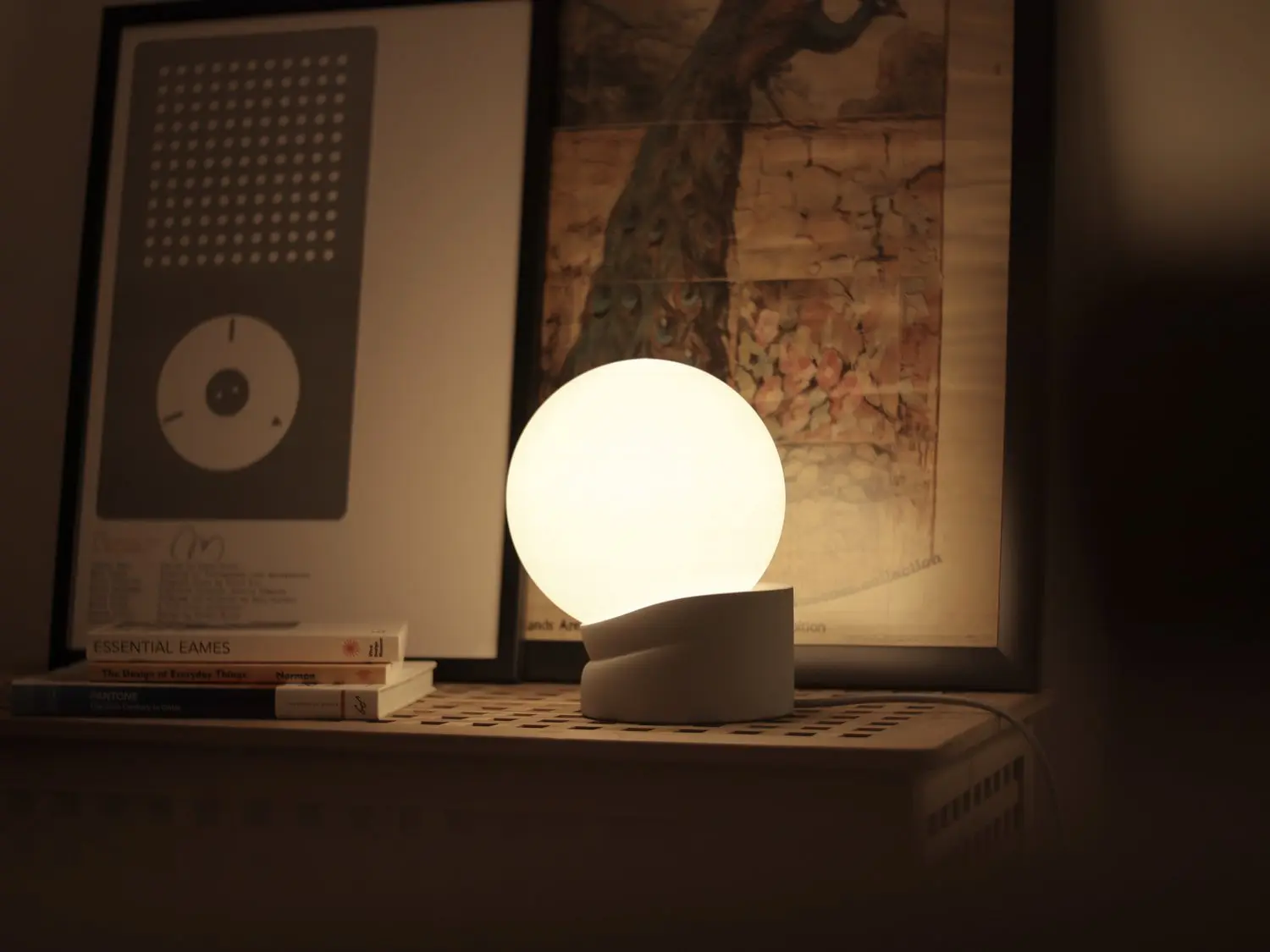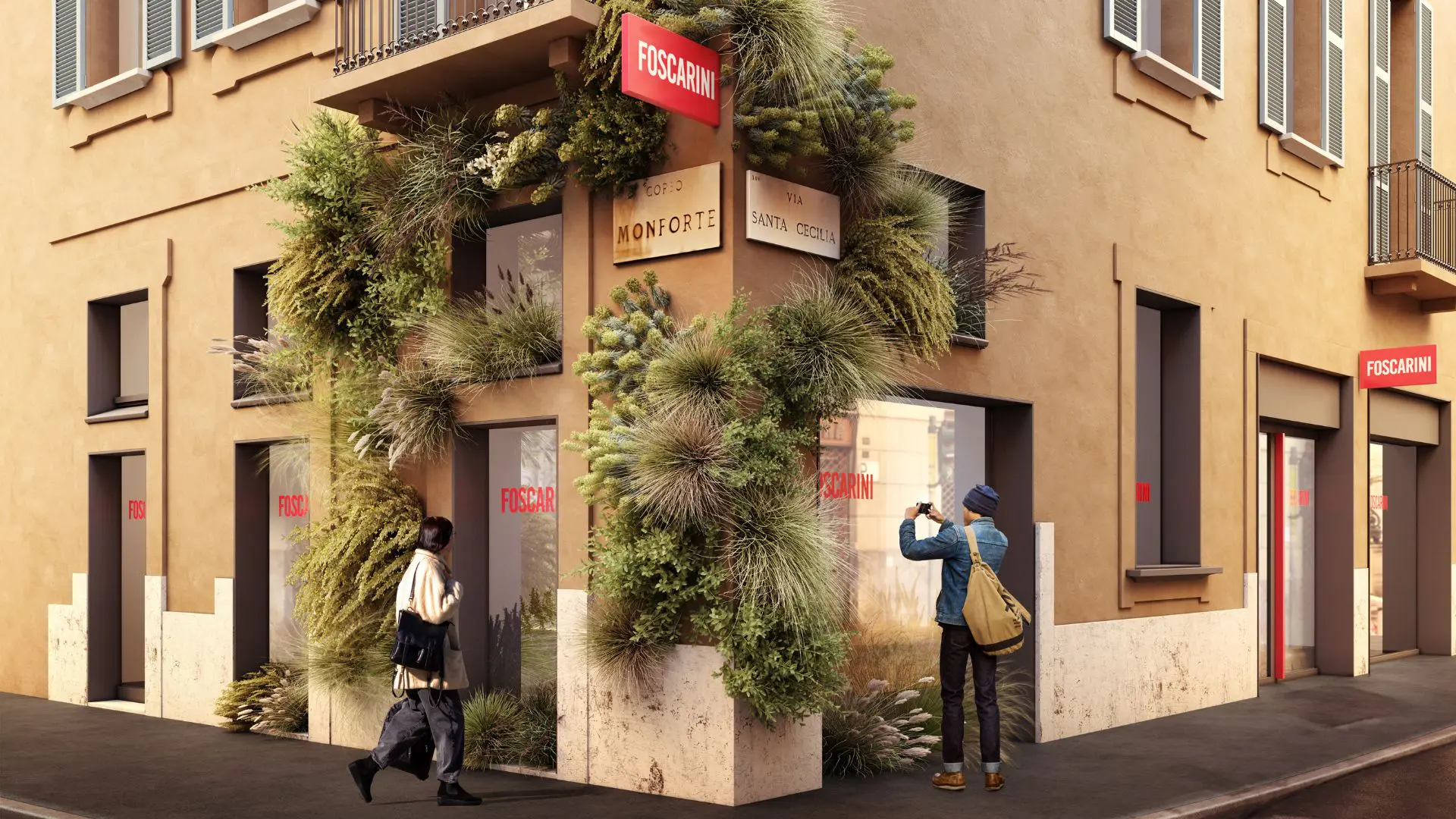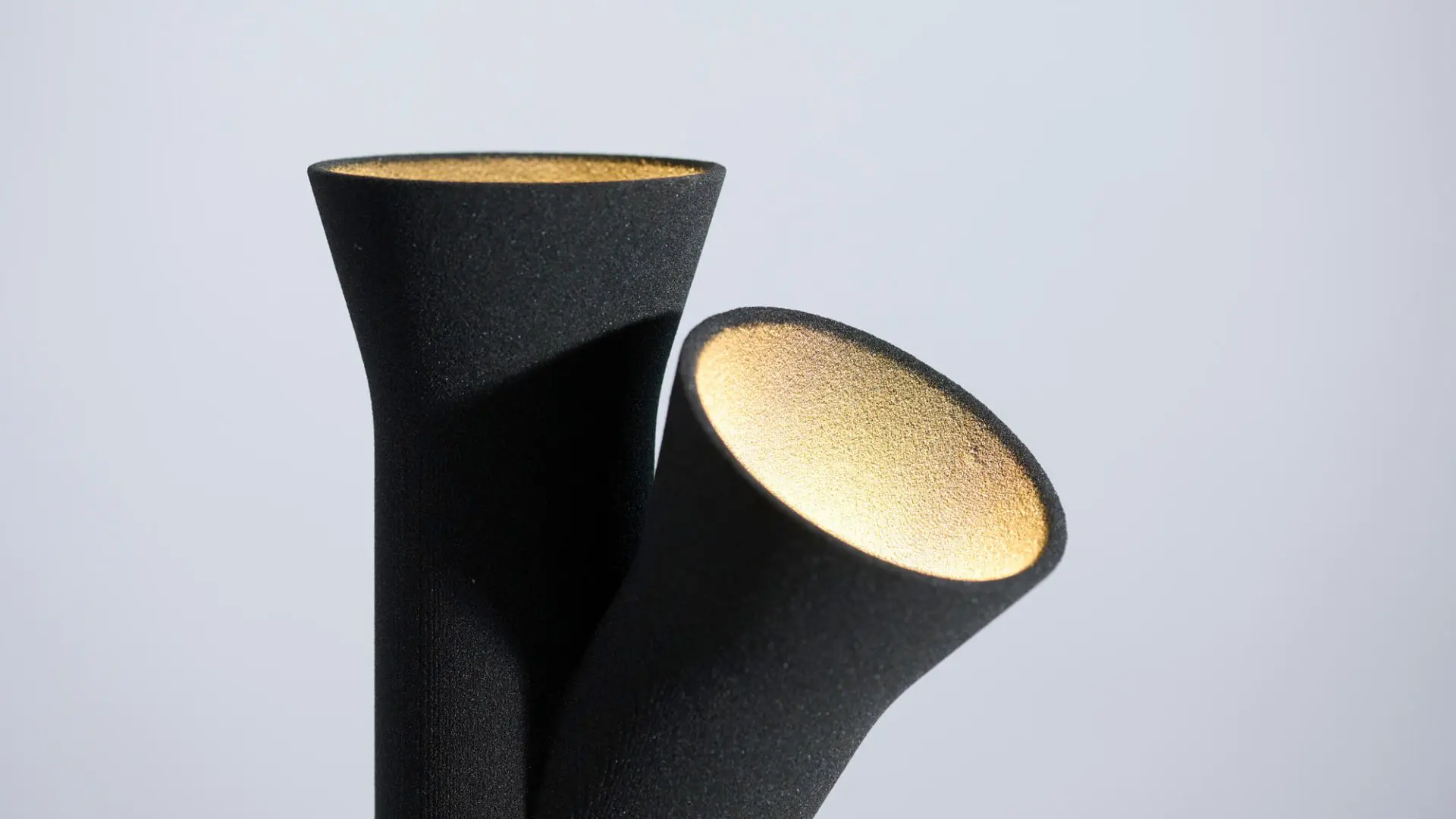From waste to wonder – Oorjaa’s sustainable lighting designs
Founder Jenny Pinto shares Oorjaa Studio’s journey in transforming materials like banana fiber and invasive lantana into handcrafted lighting sculptures.

In a world where sustainability is often spoken but embodied, Oorjaa, a Bangalore-based design studio, transforms intention into crafted reality. What began in 1998 as an artisanal paper-making experiment by designer Jenny Pinto has evolved into a brand of handcrafted lighting.
At its core, Oorjaa combines traditional craftsmanship, circular design principles, and natural materials that are often dismissed as waste or even nature’s threat. Their latest masterpiece, Gaia: Pillars of Light, showcased at Design Next by Isola Design during Dubai Design Week 2024, perfectly embodies the studio’s aesthetic and values.
The Design Next platform, curated by Isola Design, highlights forward-thinking projects that merge innovation, sustainability, and artistry, an ideal setting for Oorjaa’s work, which turns environmental challenges into sculptural lighting.

In our conversation with Jenny Pinto, we uncover Oorjaa’s fascinating journey, the transformative magic of materials, and their collaborations with NGOs and tribal artisans, revealing how sustainability becomes crafted designs, one light at a time.
What is Oorjaa? How did the journey for lighting design begin?
Jenny Pinto:
“Oorjaa is a design studio that handcrafts sustainable materials into lamps and custom lighting solutions. The journey began in 1998 when Jenny Pinto started one of India’s first artisanal banana-fiber paper-making studios in Bangalore. Initially focused on natural fiber handmade paper, Oorjaa discovered the material’s unique interaction with light and its versatility. This exploration led to the studio’s transition into lighting design, combining craftsmanship with sustainability to create functional and artistic pieces out of raw waste material.”
Oorjaa explores both craftsmanship and sustainability in its products. Can you explain to us further what this means for the brand?
Jenny Pinto:
“When Oorjaa talks about sustainability and craftsmanship, we refer to our belief that the way how a product is made is as important as what is made. Combining traditional craftsmanship with circular design principles and using locally sourced sustainable materials like banana fiber, quarry waste, upcycled cork, and lantana is brought to life. Each product is handmade, reflecting individuality, a sense of uniqueness and the inimitable beauty of handcrafted work done with immense dedication of our hardworking artisans.

Oorjaa’s purpose is to champion sustainable living by creating products that are gentle on the planet while inspiring thoughtful consumption. Our work embodies a belief in crafting meaningful, environmentally responsible designs that bring beauty and utility to everyday life.
At Oorjaa, we minimize waste by upcycling agro and urban waste, avoiding chemicals, and ensuring energy-efficient processes. The studio also uses invasive species like lantana and water hyacinth to create products that address environmental challenges.”
During Dubai Design Week 2024, Oorjaa exhibited at Design Next the light sculpture Gaia. What is the concept behind it?
Jenny Pinto:
“The concept of Gaia: Pillars of Light centers around the interplay of light and matter, symbolizing the balance between nature and modern living. The name Gaia refers to the ancient Greek personification of Earth, representing the interconnectedness of all life.
The shape emerged from the natural textures and strengths of its materials—handmade banana fiber paper and lantana. The design aims to evoke an ethereal quality while raising awareness of environmental issues, such as the threats posed by invasive species like lantana.”

What are the materials from which Gaia is made?
Jenny Pinto:
“Gaia is handcrafted using two primary materials:
- Banana Fiber Paper: Derived from agro-waste, banana fiber is sourced from banana plants with short lifecycles. Once a tree produces fruit, it is replaced by new sprouts, leaving behind abundant fiber. This material is strong, malleable, and translucent.
- Lantana Camara: An invasive weed that has overrun wildlife reserves in India. Its tough, tenacious nature makes it versatile for crafting, despite the ecological harm it causes.
Both materials are minimally processed, chemical-free, and chosen for their sustainability and aesthetic qualities.”

How did the idea of using lantana come to be?
Jenny Pinto:
“Oorjaa began working with lantana camara due to its ecological impact—it is one of the world’s ten worst invasive species, choking native flora and disrupting wildlife habitats in India and across the globe. Collaborating with NGOs and tribal communities, Oorjaa saw an opportunity to turn this problematic plant into a creative resource.
With a lot of research in terms of its strength, fragility and workability, Lantana proves to be a resilient, versatile and durable material, suitable for crafting structural forms but requires careful handling during processing and shaping with a lot of skill and effort to integrate into designs.”

When talking about the craftsmanship of unique pieces, there is always a human touch on its creation. Who is the artisan team behind the crafted Gaia light sculpture?
Jenny Pinto:
“Gaia was crafted by Jenny Pinto and her team in collaboration with tribal artisans from the Real Elephant Collective, based in the Nilgiri Biosphere Reserve. The team blends traditional knowledge with contemporary design, ensuring the materials’ unique qualities are celebrated.
It begins with sourcing and preparing materials (e.g., weaving lantana and shaping banana fiber paper), followed by the meticulous assembly to ensure structural integrity and aesthetic balance. Each Gaia light sculpture can take several weeks to complete, depending on its complexity and the availability of materials.”
foto
What kind of feedback/reaction do you receive when people pass by your creations?
Jenny Pinto:
“Audiences often describe Oorjaa’s creations as ethereal, organic, and deeply thought-provoking. Many are intrigued by the materials used, particularly lantana and banana fiber, and are inspired by how waste and invasive species have been transformed into something beautiful. The work often sparks conversations about sustainability, circular design, and environmental responsibility.”

What is the next step for Oorjaa?
Jenny Pinto:
“Oorjaa is focused on deepening its engagement with circular design and sustainability. Continuing collaborations with material engineers and designers to explore innovative uses for waste and invasive materials. Expanding the range of lighting and interior decor, incorporating more experimental materials. Bringing in more thought provoking and functional products.
Strengthening partnerships with NGOs and indigenous communities to scale sustainable livelihoods through lantana and other invasive materials. Each day, Oorjaa takes a step forward in understanding the circularity of materials, integrating them into designs while staying rooted in the very first thought that sparked its journey.”











